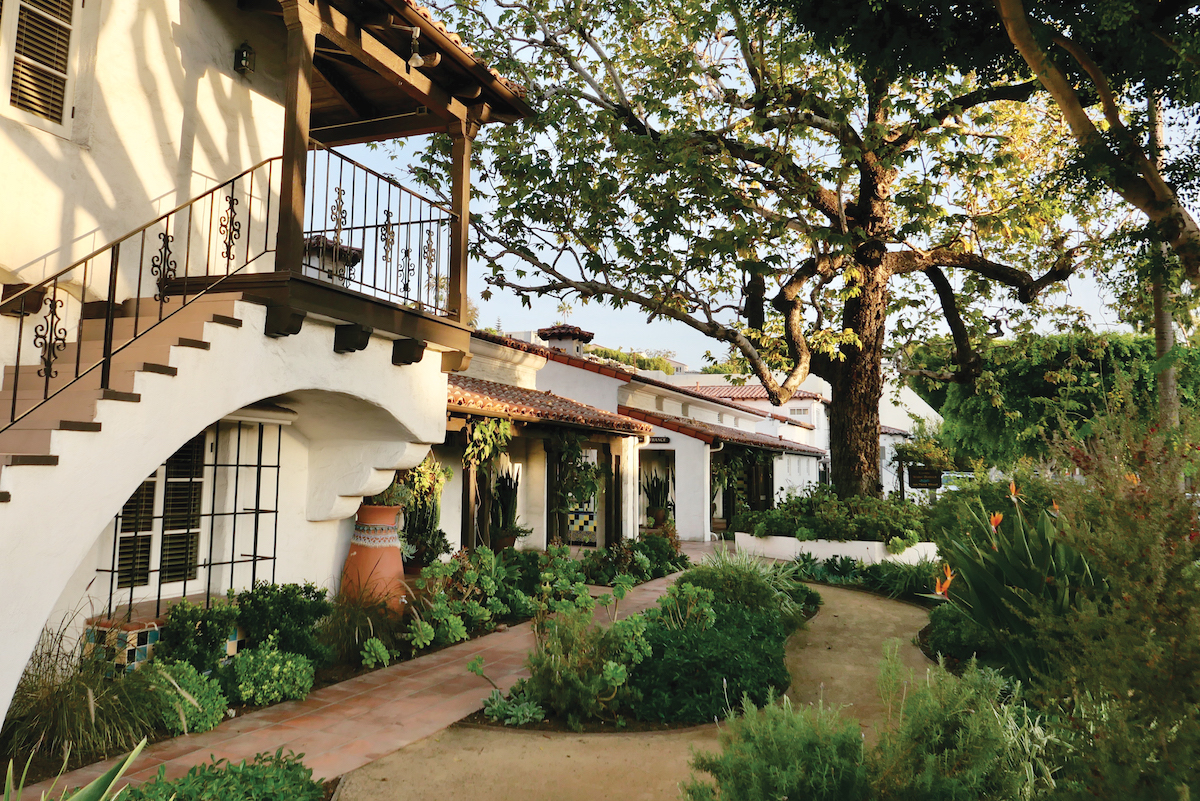
Mitigate maintenance and lower water bills by landscaping with native plants.
By Tanya A. Yacina
While recent rainy Southern California weather patterns have put the worry of a drought out of many people’s minds, the truth is that another drought season is just around the corner. Laguna Beach is lucky in that it sits next to the ocean waves, but that doesn’t save plants, vegetation and landscapes from the usual lack of fresh water, which is where a drought-resistant landscape plan comes into play.
“People should conserve water because water is an important part of everyone’s life. Droughts in California are not a new phenomenon,” says Jose Gallardo, a water use efficiency specialist at Laguna Beach County Water District. “In fact, droughts are increasing in intensity and length. By conserving water now, we are better suited to get through the current and future droughts.”
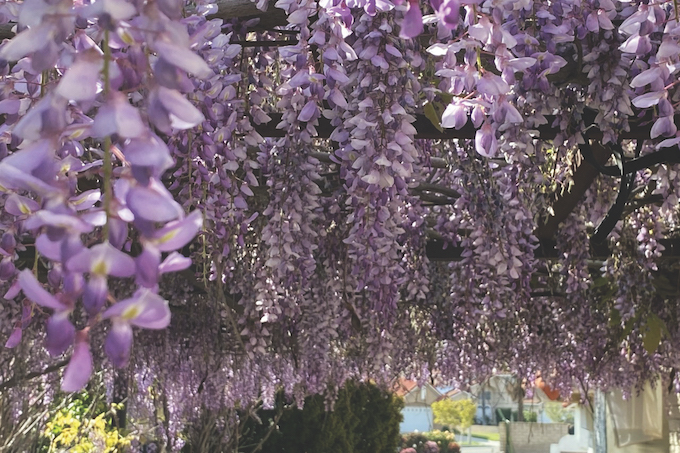
Gallardo notes that recent rains have helped reservoir levels throughout the state to rebound and the Sierra Nevada snowpack continues to break records. “But, while storms have eased dry conditions,” he says, “drought is likely to return. California has a history of deluge and drought. In addition, California’s groundwater levels have fallen dramatically during the state’s droughts and have been depleted by decades of heavy pumping. The Colorado River, a main source of water for Southern California, is in a two-decades-long drought, which has caused its massive reservoirs, Lake Mead and Lake Powell, to plummet. The recent rains, while welcome, are not enough to alleviate that state’s water problems entirely. It will take multiple years to fully recover.”
Gallardo says the main benefit of drought-resistant plants is water savings. Once established, a native and drought-resistant landscape requires infrequent watering and less hands-on maintenance than a traditional garden. Native plants also provide habitat and food for local pollinators and wildlife.
Landscape architect Ann Christoph agrees that since the area has a climate featuring long periods without rainfall, drought-resistant plantings help to sustain landscapes continuously without great investments of water or extra maintenance. Not to mention, these landscapes look more appropriate to the region, she says.
Weeding Through Plant Choices
Christoph explains that drought-resistant options include a variety of succulents and other leafy plants adapted to the local climate with deep roots, the ability to catch moisture in the air and funnel it to the roots, and hardened leaves that reduce transpiration. These types of plants are in the hillsides and greenbelt and in the other Mediterranean regions of the world. A comprehensive plan is needed to produce a drought-resistant landscape that also meets the needs of a home setting.
“Pick the ones that are easiest to grow and that will fit into the space you have available. Baccharis pilularis prostrate hybrids (coyote brush) is a good one to start with,” Christoph advises. “Encelia californica (coast sunflower) is another one that is easy to grow. Some native plants are so adapted to drought that they don’t do well in a garden setting where there is likely to be supplemental watering.”
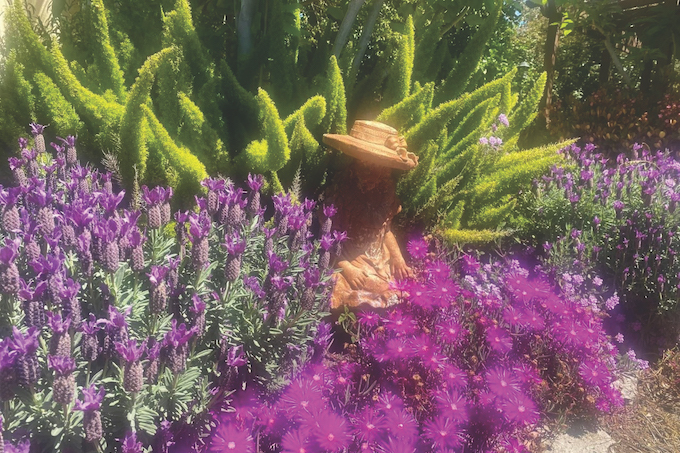
Planning these types of gardens can be complex, but landscape architects specialize in this task. Gallardo recommends working with a licensed landscape contractor for just this reason.
“Each landscape has unique needs and there isn’t a one-size-fits-all solution that will work for everyone,” Gallardo says. “Do some research and ask around to see if anyone you know may have recently made changes to their landscaping that you like. Don’t be afraid to borrow ideas or designs from other successful landscapes.”
Wisteria is one—perhaps surprisingly—drought-tolerant plant recommended by Ruben Flores, owner of Laguna Nursery and landscape design firm Visionscape.
“The wisteria is a grand showstopper,” he says. “The fragrance of the wisteria is heavenly, the showers of bloom are so soft and cascading. It is fast growing, but still takes time for it to cover a large expanse [such] as … [an] arbor or a wall trellis, but well worth the wait. … The wisteria is highly drought tolerant can endure even in the most severe heat and cold—truly a favorite of most gardeners.”
When it comes to lawns, Christoph doesn’t recommend using artificial turf as a replacement for real grass because, although it may seem like a good way to mitigate water usage, it requires a substantial initial investment and will need to be removed and replaced after some time, which creates more plastic waste. She also recommends utilizing a spray system with rigid pipes for watering because they are more reliable than drip systems and also moisten and clean surrounding leaves. She notes that it’s necessary to carefully adjust the spray system to avoid run-off onto adjacent paved areas.
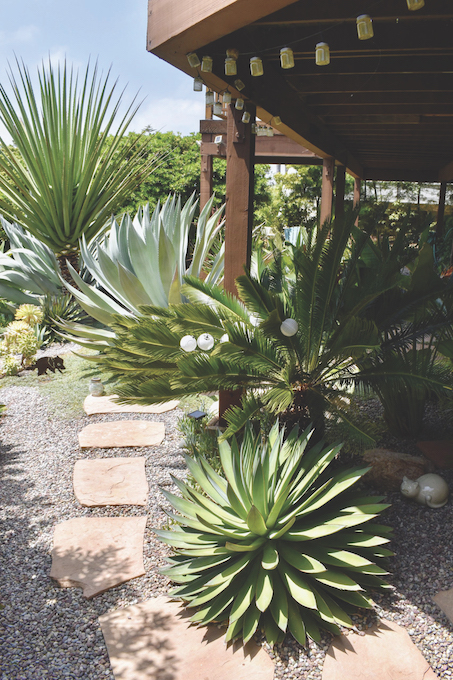
“A real lawn is much better environmentally and functionally,” she says. “But lawn areas should be confined to spaces where they are needed for use—for play or walking, not just to fill in areas you don’t know what to do with. Those are places for ground covers and shrubs.”
She says the watering frequency for this type of landscape depends on the weather, as well as the sun and shade pattern and the stage of life of the plants used. She recommends looking at a plant as one would a growing child—be sensitive to its needs. She also notes how important soil tests are in choosing plant material to assure the success of planting: Many drought-tolerant plants don’t do well in clay soil, so it’s best to know what you’re working with in advance.
“The main issue you want to stay away from is grouping plants together that have different water needs,” Gallardo explains. “An effective drought-resistant garden is correctly hydro-zoned to avoid over- [or] underwatering plants. Hydro-zoning should be done during the planning stages and involves grouping plants with similar water needs together.”
Going Green
Creating a yard that’s more sustainable and saves money may be the goal, but how a homeowner wants their landscaping to look will dictate the amount of maintenance a drought-resistant garden will require. For example, Christoph says, if a naturalistic look is desired, clipping and hedging is not only unnecessary, it is counterproductive. She says to let natural duff accumulate on the ground, and don’t rake and remove organic material from the ground surface.
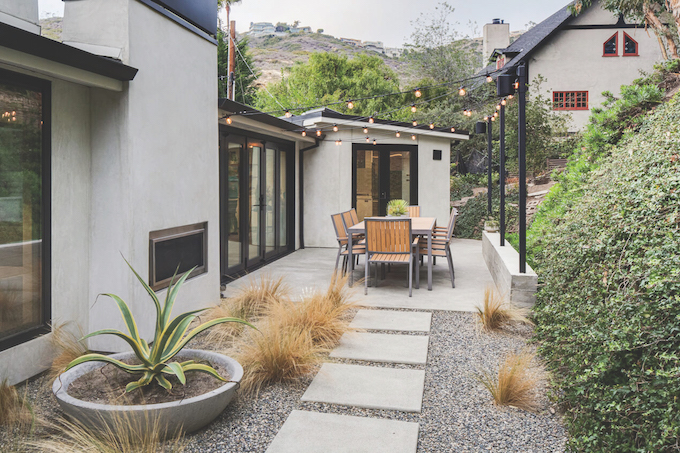
“Raking is a task [that’s] not needed. Until plants have covered the surface, hand weeding will be necessary,” she says. “Your garden will look like it belongs in California, not like it is trying to duplicate a garden from a different, wetter climate.”
Gallardo says the main way that native plants can help save money is by reducing water usage. Native plants require less water to thrive and have adapted to and are uniquely suited to survive in their native habitat. Overall, they also require less maintenance, which saves time and money.
The Laguna Beach County Water District has various rebate programs that are worth looking into.
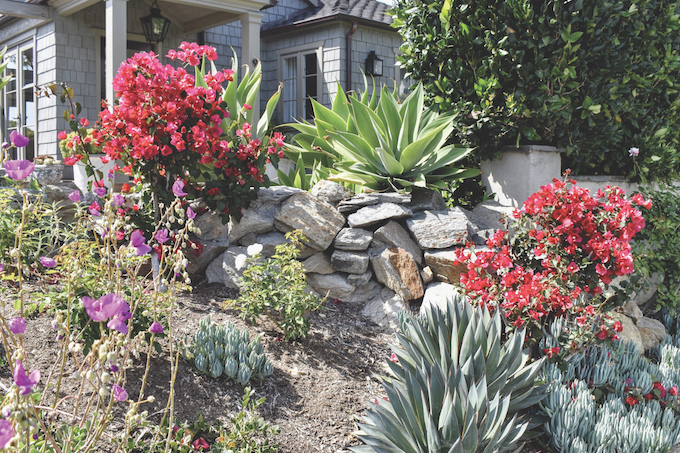
“Our landscape rebates can help cover the costs associated with turf replacement and irrigation system upgrades,” he says. “The district also offers a rebate on smart timers that usually covers the entire cost of a new timer. To learn more about rebate programs, contact your local water provider.”
Gallardo’s strongest recommendation for decreasing water bills is making sure that homeowners understand where the water they use is going. If possible, track water usage with a smart water meter. (If you aren’t sure whether you have a smart meter, ask your water provider who can offer more information and point you in the right direction.)
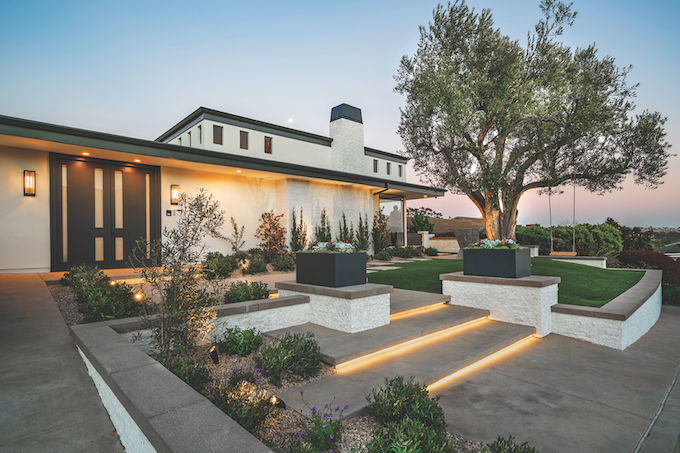
“In general, a conservative estimate for household water use shows that approximately 50% of a household’s usage goes to the landscaping,” he says. “When the weather begins to change, your landscape watering schedule should change. It’s also important to regularly check the irrigation system for any breaks or issues. The biggest factor we see at our district with high bills is an overactive irrigation system.”
With these tips and some landscape changes in favor of native plants, homeowners may soon have a water-sipping garden that not only looks great, but keeps the green in their pockets.




